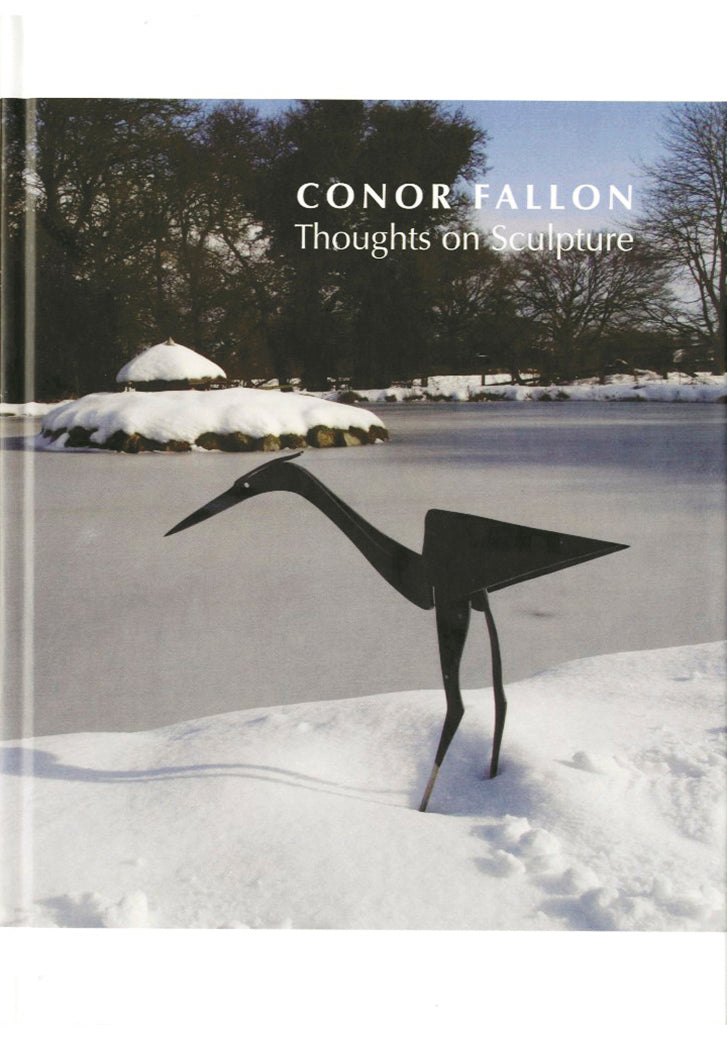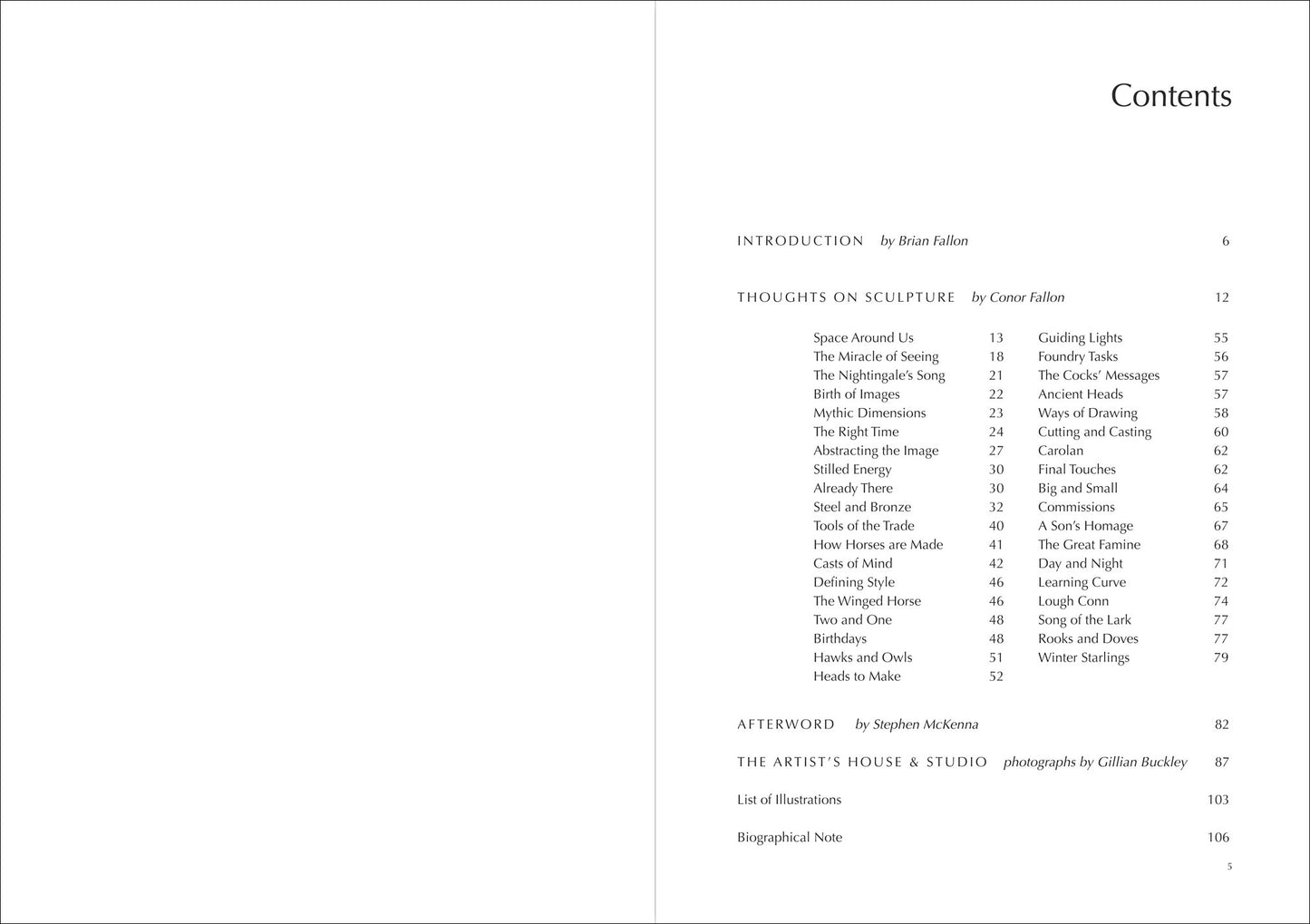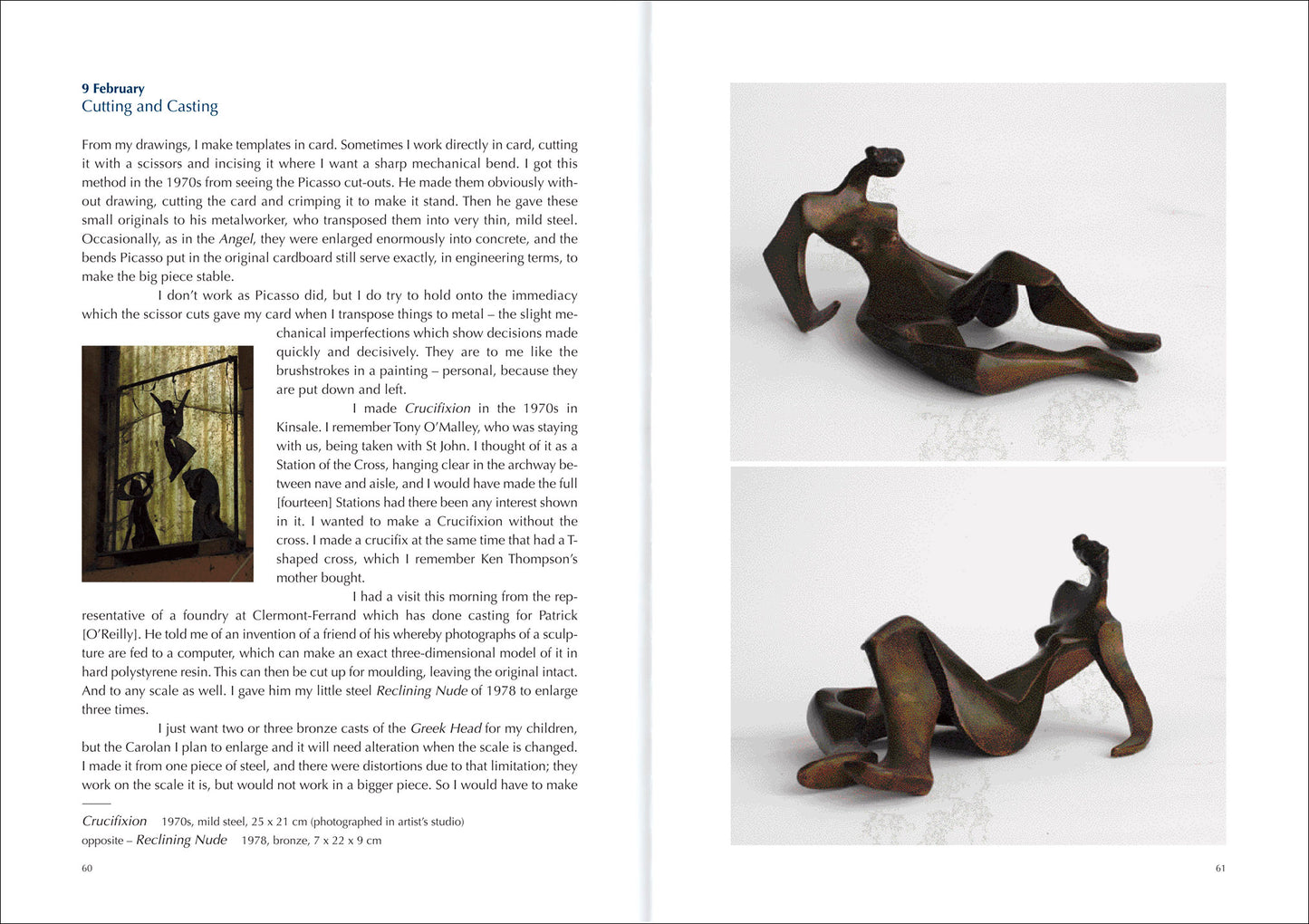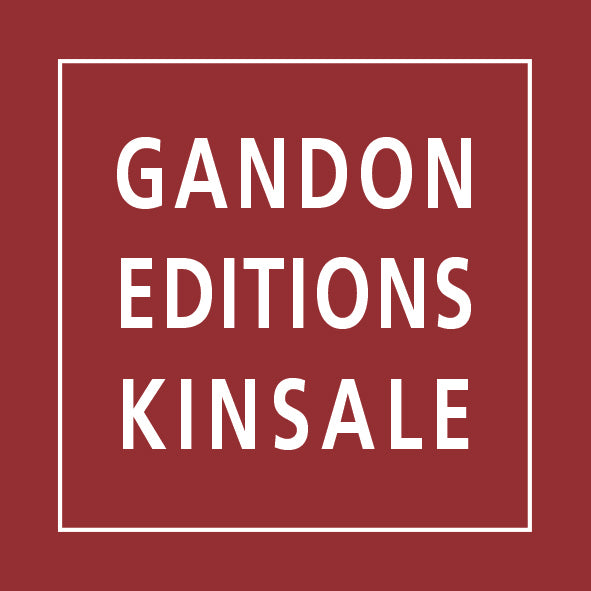Gandon Editions
CONOR FALLON – Thoughts on Sculpture
CONOR FALLON – Thoughts on Sculpture
Couldn't load pickup availability
Share
ed. Brian Fallon
text by the artist; intro by Brian Fallon; afterword by Stephen McKenna
ISBN 978 0948037 993 112pp (hardback) 24 x 17 cm 87 colour illus
Conor Fallon (1939-2007) was one of the finest Irish sculptors since the Second World War. To the end of his life he was a technical perfectionist, striving for the most exact realisation of the images he had in his mind’s eye and sparing no effort or pains to give his works the final degree of finish and formal compactness. The result is a large, varied, but remarkably even body of work, in which nothing left his studio unless he was wholly satisfied that he had given it his best and could take it no further.
The typescript for Thoughts on Sculpture was written near the end of his life and only discovered after his death. It encapsulates his whole credo and outlook as an artist, along with personal (often humorous) reminiscences and analyses of the creative figures he especially admired. It also includes very detailed descriptions of his working methods, suggesting that it was written partly as a guide to younger sculptors laboriously learning their craft. Few liberties have been taken in editing the texts for this book: Conor Fallon knew best what he wanted to say, and his words are an integral part of his thinking.
_____
EXTRACTS
"This is hardly the place to write a critical essay on his work; it can ultimately be left to speak for itself. However, a few points should be made. Though he produced a number of nudes, as well as memorable heads of Joyce and his poet-father, and made occasional sorties into abstraction, Conor Fallon’s most typical subjects were birds (both wild and domestic), horses and fish. However, in no sense was he what the French call an animalier; his birds carry almost symbolic meanings, while his horses have overtones of both classical and Celtic mythology. They are heraldic images as much as things, visual metaphors for forces visible and invisible, and the formal, abstract element is always strong. He also aimed to give his sculptures an extra dimension of landscape. He was a ‘learned’ sculptor, with roots in Cubism and perhaps to some extent in Gabo’s Constructivism, but also keenly responsive to the work of Giacometti, Calder, David Smith, Noguchi, as well as to his friends and mentors Denis Mitchell and Robert Adams. In the last decade of his life he formed a close friendship, based on mutual understanding and respect, with the American Bill Freeland. Among Irish sculptors, he respected Alexandra Wejchert, Melanie le Brocquy, Imogen Stuart, Carolyn Mulholland and John Coen, and gave support to younger artists such as Patrick O’Reilly and Alice Maher."
— from the introduction by Brian Fallon
"I think there is always a temptation for an artist to look for and stay with a method or system which he thinks will take the uncertainty, and the despair, out of the making of his art. If he finds it, it can be disguised as something much bigger and universal, or even as his personal style. At the worst, he gets stuck in the mannerisms of his own work, slowly atrophying. I have known artists who feel they have continually to change the style of their work, often radically, in order to keep their sense of their own vitality. For me, an artist’s style is what has evolved in his or her work over time – not a matter of conscious decision, but of many thousands of small decisions made in the heat of battle. I’m not aware that I have a style. If I have, I’m stuck with it, like having an accent or the language you speak and think in. I return to a theme because I have had some new insight into it, never to the original vision. Technique is the same. I know that at this stage of my life I can do many technical things much faster than before, solve problems much quicker, know how to achieve the effects I want. That is from the experience of doing, or learning from other people, including professional metal workers I have worked with, or just from trial and error over the years. To my faint surprise, all this adds up to an ability actually to make whatever I conceive, and that, I suppose, is my technique. Very few artists arrive at ways which open up so many possibilities that these have to be explored for the rest of their lives. Calder is one, maybe Mondrian another. But each work, for them, is still an entirely new attempt, maybe sometimes a variation which they think will reveal everything. Today is Mozart’s 250th birthday. Of all the composers, he is the one whose work I have fancied I could make in steel, each statement as clear and as strong as an artefact – little arabesques of metal. Has any sculptor every tried to do that?"
— by Conor Fallon, January 27: Defining Style
|
CONTENTS Introduction by Brian Fallon 6 Space Around Us 13 Afterword by Stephen McKenna 82 |












